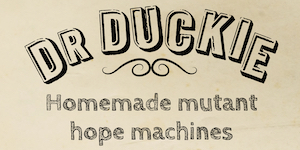So Channel 4’s Secrets of the Living Dolls looks like a whole other thing.
Screening tonight, it’s a one-off documentary about female masking, a subculture in which mostly straight men “transform themselves into [female] dolls by squeezing into a second skin” by means of rubber body suits and masks. The doc’s subjects include a 70-year-old Californian, a British barman and the workers at Femskin, “a family-run firm in America’s Bible Belt who developed an ultra-light wearable female body-suit and who are struggling to keep up with demand”.
No question, at first glance, the masks look pretty damn freaky, a little bit Jocelyn Wildenstein, a little bit Michael Myers. But (a) we like pretty damn freaky and (b) first glance only gets you so far. The mini-webisode already online, about New Yorker Dominique, points towards a whole spectrum of related issues, from race and gender to the perils of the closet.
But even after watching that the WTF factor was still pretty high so I put some questions to the documentary’s makers, director Nick Sweeney and producer Luke Malone.
So how would you locate masking in terms of LGBTQI experience? Is it comparable to transvestism? Gender dysphoria? Cosplay? Drag performance? All/none of the above?
Nick Sweeney: It resembles aspects of all of those things but is also distinct from them all. In fact, there aren’t many LGBTQI people who are aware of female masking. It’s important to also note that the maskers in the documentary have female partners and most have children. All of those featured identify as straight.
How easy was it to find people willing to discuss masking on camera?
Luke Malone: It first started out as a print piece and even then it was hard to find people willing to talk about masking. A lot of the men involved hide it from family and friends and are terrified about detection. So when we decided to instead turn it into a documentary – it’s so visual, how could you not? – trying to find people willing to talk about it openly on camera was an even bigger challenge. But after convincing our contributors that we were genuinely interested in their experiences and not some sensational version of their story they began to relax. A few of the guys in the documentary even used it as an opportunity to come out to friends and family.
What was the biggest surprise about the process of making the film? And the biggest challenge?
Nick Sweeney: The biggest surprise was getting to make it in the first place. It’s a complicated, unusual subject and few networks are willing to take that type of risk. Luckily, Channel 4 and production company Firecracker Films have a history of sensitively documenting hidden subcultures. The biggest challenge was trying to show the breadth of that world, as it spans continents and has thousands of participants, all of whom have unique reasons for doing it.
What do you hope the film’s transmission might achieve?
Luke Malone: It’s so rare nowadays to help bring a secretive subculture to a mass audience, and Nick and I took that responsibility seriously. We still can’t believe no one beat us to the punch. For the female maskers themselves, we wanted to help them tell their stories and show people that they’re not a bunch of freaks, essentially. For many, masking is a huge part of their lives, and why shouldn’t they be free to doll up with impunity? And for those on the more closeted side, it’s nice to think they might not feel so alone.


